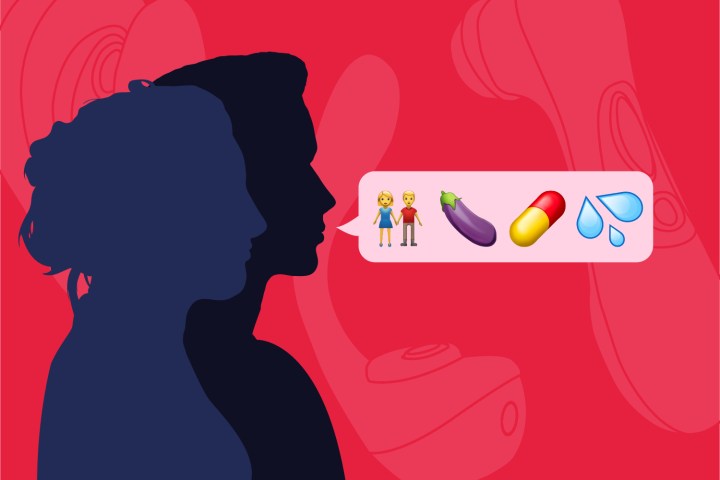
America has a sex ed problem.
As of January 1, 2020, only 27 of the 50 states mandate both sex and HIV education. More startlingly, seven of these states specifically require negative information to be provided on homosexuality and/or positive emphasis on heterosexuality, according to data compiled by the Guttmacher Institute.
Yikes.
The quality of America’s sexual education curriculum is questionable at best, and reprehensible at its worst. Without proper education on something so essential to human existence, people invariably seek knowledge from other sources. In the age of robots and proliferation of digital media, sex tech is using cutting-edge tools to help people achieve orgasm, but it’s also been forced to educate a public that doesn’t know a lot about their own sexual health.
At the same time, sex tech faces a culture of taboo surrounding sex that experts say isn’t just detrimental to our pleasure, but to our understanding of consent, healthy relationships, and our own physical health.
Issues start young
Sexual education in the U.S. suffers from the same inadequacies as many subjects — where it’s taught, who teaches it (and how they’re trained), and the overall curriculum. All of these components vary widely from state to state, as well as on a local level. But sex ed, particularly, has some unique challenges.
Chief among them is how late education on the subject begins. Sex education doesn’t start until late middle school at the earliest, and oftentimes as late as high school. When compared to the numbers of those who hear about sex or engage in sexual acts before that point in their education, it’s frighteningly late.
Studies performed by the National Survey of Sexual Health and Behavior, the nation’s largest nationally representative survey focused on understanding sex in the United States, have shown that the majority of 14- to 17-year-olds have previously engaged in sexual acts, solo or with partners. In a separate study, it was found that 80% of 14- to 17-year-old males who reported penile-vaginal intercourse used condoms during sex, while only 69% of sexually active females reported condom use.

“We’re not laying the groundwork,” Dr. Leslie Kantor, professor and chair of the Department of Urban-Global Public Health at the Rutgers School of Public Health, told Digital Trends. “I often suggest that we ought to think about sex education the same way we think about math. We don’t jump in with algebra and geometry. We start off with addition, subtraction, multiplication, and division. And ideally, sex education would be the same way, where even elementary school students can learn some really good things about how you develop good relationships, and what’s a good friend, and all of that.”
Comprehensive sex ed includes a broad array of topics that are valuable throughout people’s lives. The skills necessary to recognize healthy and unhealthy relationships, as well as the core proficiencies of being able to communicate, negotiate, and refuse, are “essential components to forming healthy relationships,” says Kantor.
Those who are taught such lessons early are also better served. Experts in the field overwhelmingly agree that without proper context, people of all ages fail to properly grasp the role of sex in human life and miss out on important lessons regarding consent, healthy relationships, and sexual health. One key piece at the intersection of all this is pleasure — a conspicuously absent topic in U.S. education.
“Pleasure is something that, when we don’t talk about that with young people, we’re actually leaving them pretty vulnerable. So, when we’re not integrating even a basic message like ‘sex should not only be consensual and desired, but pleasurable,’ we’re not setting people up to say, ‘you know what, this is not OK. This is not appropriate, or this isn’t good enough,’” Kantor explained.
Taking charge
“Who’s in charge of your pleasure?” Lora Haddock DiCarlo, founder and CEO of sex tech company Lora DiCarlo, asks rhetorically.
Dicarlo’s Osé massager doesn’t vibrate, but it’s generated a lot of buzz in the past year. Osé is a robotic massager that has more than 250 parts. Utilizing biomimicry, the device massages methodically, as only a skilled (and very precise) human could.

Granular controls and a wide range of fitment on the Osé massager offer many users their first opportunity to “understand more about their own bodies [and] fine-tune and figure out exactly where their pleasure points are,” DiCarlo told Digital Trends. “Many people that tested this thought they were broken, or they couldn’t have certain kinds of orgasms, and discovered that they could.”
As astounding as it must be to have such an explosive biological revelation, learning about one’s pleasure isn’t the only benefit sex toys have to offer. Dr. Debby Herbenick, professor and director of the National Survey of Sexual Health and Behavior at Indiana University, has studied sex, sexuality, and sexual enhancement — among many other topics — across a broad range of participants, from ages 14 to 102.
The data overwhelmingly shows that people who understand and are open with their sexual needs are also more diligent about their sexual health.
In one such study, Herbenick found that 53% of women and 46% of men surveyed report using a vibrator in solo or partnered sexual acts. Among them, women who used vibrators were found to be more likely to have had a gynecological exam in the past year and have performed genital self-examination in the previous month.
As for men, those who reported use of vibrators were more likely to have done testicular self-examination, among other healthy behaviors. The data overwhelmingly shows that people who understand and are open with their sexual needs are also more diligent about their sexual health. At the same time, multiple measures of sexual satisfaction were reported to be higher for men and women who use vibrators.
In other words, self-pleasure is self-care.
Fighting the stigma
Sex tech isn’t immune to the ills of the U.S.’s anemic sexual understanding. Entities like the Consumer Technology Association (CTA), magazine publishers, and even credit card companies still pose barriers to these sexual resources. In 2019, the CTA, which runs the annual CES event, banned Lora DiCarlo from the world’s largest tech expo and stripped it of its CES innovation award on the grounds that it was “profane, obscene, or immoral” — strong words for a women’s sex toy. While the award and entry to the show were eventually restored, it took months of persistence by the company to do so.

After fighting its own battles in 2017, Satisfyer became the first sex toy manufacturer allowed to advertise in Elle and Cosmopolitan magazines, despite decades of the latter’s well-known columns on how to sexually please men, as well as its editorial content that reviewed the very sex toys it wouldn’t advertise.
“It took me a year to push the door to Hearst in New York,” Jerome Bensimon, U.S. president of EIS inc., parent company to Satisfyer, told Digital Trends. “We’ve even been turned down by credit card processing [companies] because they could not accept that our product category is clean enough.”
Both Satisfyer and DiCarlo encountered startling deficits in education when making their products. While DiCarlo spoke with people who thought they were physiologically “broken,” Satisfyer found that most people simply didn’t know much about what lay between their legs.
“99.5% of the women we surveyed don’t know the size, the shape, or the length of the clitoris.” Bensimon told Digital Trends during our interview at CES in January.
“99.5?” I replied, incredulously.
“Lend me your clitoris,” Bensimon said to Satisfyer’s director of education, Megwyn White.
White chuckled and handed him something I’d certainly never seen before.

I grew up in a great elementary and high school education system, graduated from college, and generally consider myself a smart, at least above-average educated person in the U.S. Yet, here I was at a sex toy booth in Las Vegas, aged 29, for the first time learning what a clitoris looks like, as 99.5% of adult women surveyed (and presumably 100% of men) had to learn before me — from the same source.
While I may not have found my latent knowledge acquisition particularly timely, Dr. Herbenick is well-studied on where people learn lessons about sex that our school systems didn’t teach us — and sex toys are a big part of it.
“I just think what’s important now is we have a diversity. Because, traditionally, our sex ed has never spoken to everybody,” Herbenick explained to Digital Trends.
American sex ed let you down, but there’s still hope
If you’re feeling rather uneducated, or just plain curious, there’s still a myriad of resources, toys, tech, and content to help you learn and practice good sexual health for yourself and your relationships.
For those looking for age-appropriate content tackling subjects of puberty, sexual orientation, consent, and healthy relationships, among many other tough topics, amaze.org provides animated educational content for adolescents and teens. Even if you’re beyond that age range, the messages, information, and quality of the content can prove valuable.
Moving more toward teenage years and above, YouTuber Hannah Witton provides straightforward, video-blog-style talk on a range of sexual health and gender topics, both personal to herself and not. The personal nature of many of her posts, as well as the topic selection, are uniquely engaging in a way you’ll be hard-pressed to find in the U.S. education system. For content oriented more toward sex, relationships, and pleasure, you may find the works of sex educator and author Shan Boodram useful. Both cover a range of popular topics.
When we have barriers to innovation in this area, it’s not helpful to anyone.
Easily accessible information regarding contraceptives, STDs, consent education, and many other sex topics can be found at O.school, a quick-and-easy search tool and guide for various sex-related topics. Other such resources include Power to Decide, which offers information and resources on birth control, and Planned Parenthood, which has recently released educational videos on many of these subjects.
As for adults looking to learn more about sex or pleasure, hands-on workshops with trained sex educators at toy stores like Romantic Depot, Good Vibrations, or BabeLand can be great introductions to your own pleasure and body understanding (as well as your partner’s), as can many of the aforementioned sites and organizations.
If you decide to look for sex toys online, be sure to buy products from reputable sellers and manufacturers. Amazon or Spencer’s shouldn’t be your first stop, but rather dedicated marketplaces (like those mentioned above), which sell toys for sexual use that are held to a higher standard of quality and safety. And, as always, hygiene is key with such products, so be sure to clean them often with body-safe cleaners.
“I think it’s important and needed that so many health organizations are now incorporating pleasure. If we talk about what people aspire to in terms of pleasurable, respectful, consensual sex, then we can help them get there. Show them — talk with them about what they want and then show them the ways to get there. And yes, sexual-enhancement products have a role to play in that. And certainly, when we have barriers to innovation in this area, then it’s not helpful to anyone,” Herbenick said.
“So, it’s about consent — yes; it’s about pleasure – yes; it’s about relationships – yes. These are parts of the human life and they matter.”



